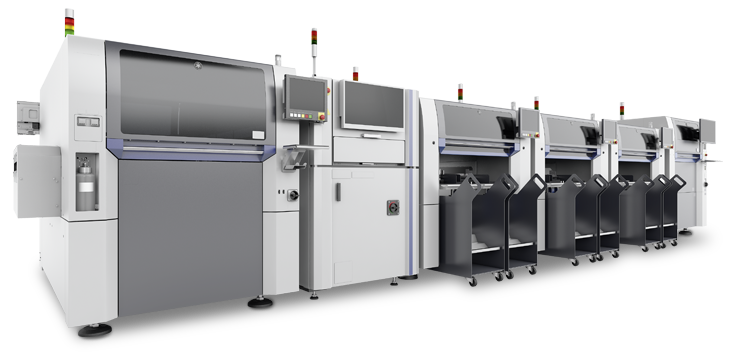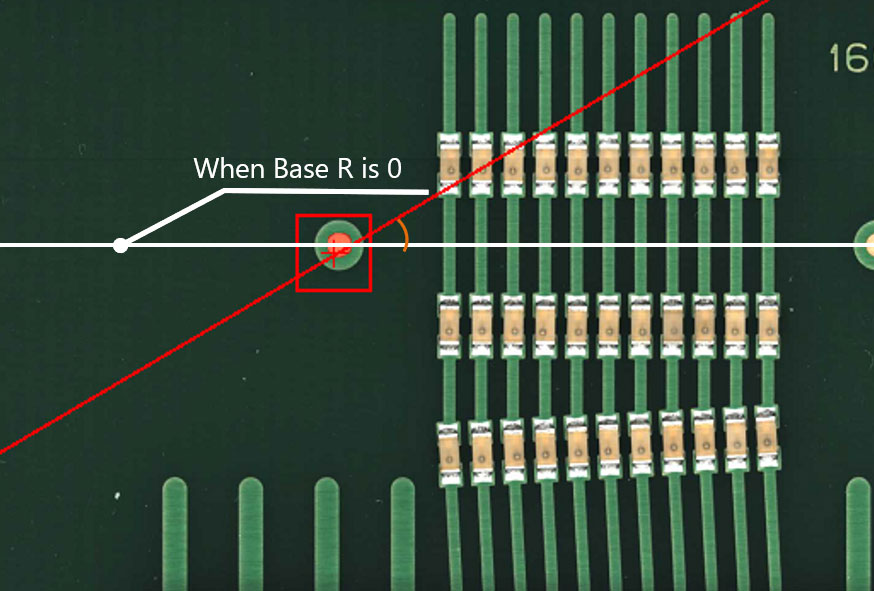Europe’s automotive lighting makers are moving from traditional electrical production techniques to become high-speed, precision electronic assemblers
In recent years, the LED-lighting revolution has transformed vehicle styling as well as the quality of the illumination cast onto the road. In front and behind, the change is evident in new designs, new shapes, and signature branding. Cars are more brightly lit and easily visible at all times of day or night, while brighter, whiter headlamps vividly illuminate the way forward. Inside, the revolution is seen in enhancements like customizable mood lighting that lets occupants determine their desired ambience.
The transition to LED lighting is also driving change in the manufacturing processes used to build these “light engines”. Large numbers of emitters can be arrayed in grids, or strips, and associated power-supply and electronic driving circuitry is also needed. Components are assembled on a printed circuit board (PCB) or flexible printed circuit (FPC) using surface-mount technology. It’s a leap forward from traditional techniques that transforms lamp-unit production into a high-precision sequence that can only be handled using specialised automation.
Yamaha Robotics SMT Section is a leading supplier of surface-mount assembly equipment chosen by well known brands as well as manufacturing services (EMS) companies to build automotive LED-lighting assemblies. Its customers range from multinational Tier-1s to disruptors entering the market with innovative concepts.
Working with customers in this industry directly, and through its network of sales agents and distributors throughout Europe, Yamaha has delivered complete surface-mount production lines for lighting as well as general automotive electronic assemblies. These include electronic control units, power modules, sensor modules, and chargers and inverters for hybrid and electric vehicles.
All automotive assemblies must be built according to very high standards. Car makers typically apply their own special quality specifications for evaluating components and subsystems received from their suppliers. To succeed in this market demands commitment to delivering in high volume and to the exacting schedules needed to keep vehicle assembly lines running.
Many of the companies now taking on the challenges associated with building LED assemblies have a long history in the automotive business and have been making conventional lighting products for many years. Some have their own optical, moulding, mechanical, and electrical/electronic design facilities, and are upgrading and expanding these capabilities with new tools such as computer-aided lighting software, modelling, and simulation including thermal performance and chromaticity analysis.
On the other hand, many are taking their first steps into surface-mount electronic manufacturing. “Customers are looking for automated inline equipment capable of high throughout and rapid component placement, with fast product changeovers, minimal need for line stoppages, and support for traceability, which is a must for automotive,” comments Shuichi Imai, SMT Sales General Manager, Yamaha Robotics.

The Yamaha 1 STOP SMART SOLUTION brings all these qualities together in a portfolio of screen printing, component mounting, and automatic optical inspection (AOI) platforms that interconnect and communicate to maintain seamless production with rich diagnostics and reporting. This keeps operators informed continuously and in real-time of the current status and progress towards production goals. Any of these machines can be supplied individually to upgrade slower or less highly automated equipment from other manufacturers. The YRi-V 3D AOI can even be used as a standalone system with automated program-generation using Yamaha’s YSUP software to accelerate new product introduction.
“Sometimes, a team will come to us with a clear understanding of the production capabilities, speed, and equipment features they are looking for, while others need more guidance,” explains Shuichi Imai. “Of course, we have plenty of experience across general SMT assembly, LED-specific knowhow, and the demands of the automotive sector to provide the right advice.”
Among equipment from the 1 STOP SMART SOLUTION, the YRP10 screen printer is engineered for repeatability and ease of use. Its features include standard cycle time of just five seconds and the 3S swing single squeegee head that automatically self-optimizes as the solder-paste roll diminishes. Automated stencil loading and setup cuts the effective time between changeovers to zero, enabling the next job to begin instantly.

The YRM20 mounter can place components at up to 115,000 cph and handle a wide range of components from 0201 (mm) with multi-purpose head options that ensure high speed and versatility and minimal changeovers. Side-view component detection instantly senses pickup status and the mounter automatically creates recognition data for custom or unique components.
The YRi-V AOI system combines high-performance machine vision and optics including high camera resolution, multi-angle and multi-wavelength lighting, and laser height measurement to check for correct component placement and solder-joint integrity. The YRi-V gives unerring results in a fast cycle time, which enables consistently high quality control even when working at peak production throughput. In early 2024, Yamaha introduced a new multi-component alignment checking feature in the YRi-V that is ideal for LED assembly work. It significantly reduces the time and complexity involved in programming the machine to check that large arrays of LED emitters are correctly positioned.

All the machines are engineered for fast product changeovers, which enables the lighting manufacturers to build a high mix of products and grow their customer base among car makers seeking the best capabilities for building advanced lighting for their new vehicle models.
Shuichi Imai concludes, “Our 1 STOP SMART SOLUTION fulfils the complete requirements for component surface-mounting and inspection, yet is flexible and can be configured to meet the exact needs of a wide range of customers. Working with our sales partners, we can individually tailor solutions that help companies move successfully into high-speed high-yield, automated electronics assembly.”
About Yamaha Robotics SMT Section
Yamaha Surface Mount Technology (SMT) Section, a subdivision of Yamaha Motor Robotics Business Unit in Yamaha Motor Corporation, produces a complete selection of equipment for high-speed inline electronic assembly. This 1 STOP SMART SOLUTION includes solder paste printers, component mounters, 3D solder paste inspection machines, 3D PCB inspection machines, flip-chip hybrid placers, dispensers, intelligent component storage, and management software.
Bringing the Yamaha way to electronics manufacturing, these systems prioritize intuitive operator interaction, efficient coordination between all inline processes, and modularity enabling users to meet the latest manufacturing demands. Group competencies in servo-motor control and image recognition for vision (camera) systems ensure extreme accuracy with high speed.
The current product line includes the latest YR equipment generation, with advanced automated features for programming, setup, and changeovers, and new YSUP management software with state-of-the-art graphics and built-in data analytics.
Combining design and engineering, manufacture, sales, and service competencies, Yamaha SMT Section ensures operational efficiency and easy access to support for customers and partners. With regional offices in Japan, China, Southeast Asia, Europe and North America, the company provides truly global presence.
